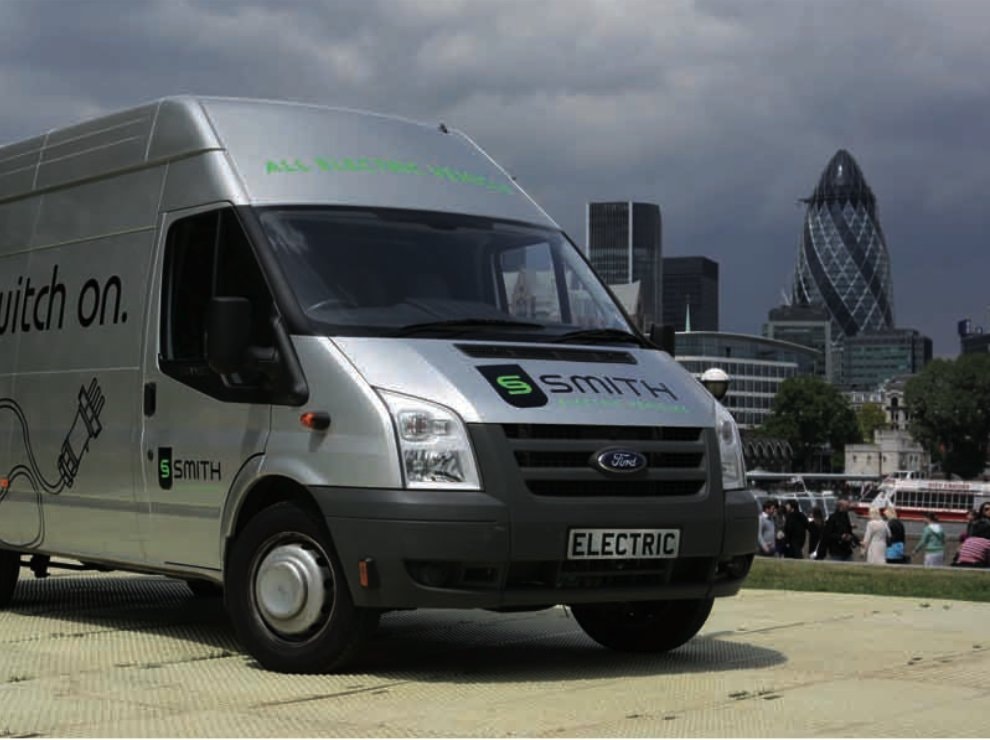Proton Power Systems announced that the first round of testing of the range extender system for Smith Electric Vehicles was successful. The group is conducting trials on the 'Smith Edison' light commercial vehicle, which is based on the Ford Transit chassis. Once testing is complete, Proton Power will launch their system in the 'Newron', Smith's 7.5 to 12.0 tonne all-electric truck.
The testing operation began in September 2010 at the Stuttgart DLR Institute and up until now it has proven that the additional energy from Proton Power's fuel cell system provided a significant increase to Edison's operational range. The final range increase will depend on the size of the fuel cell, onboard storage capacity for hydrogen and the vehicle's drive cycle. The Group seems to be satisfied with current results and will carry on testing.
"We are delighted that the first phase of testing for our range extender has been such a success and we believe it will provide a significant improvement for the market of electric powered light duty vehicles. The improved range of operation opens up exciting new possibilities to the Group as we begin to address a wider market segment. I wish to thank the whole team at Proton Power and Smith for their efforts in achieving these excellent results." commented Thomas Melczer, CEO of Proton Power of the range extender system.
"Enhancing the range capabilities broadens the application for electric vehicles within large fleets, without compromising our zero emission philosophy. Through the trials, we have already received notable interest from fleet operators in the Proton Power system and we look forward to reporting in due course on the next stage of development." said Kevin Harkin, Sales Director for Smith Electric Vehicles.
The second phase of the testing procedure will include the integration of the Proton Power system into a Smith vehicle and will run until summer 2011. The Group predicts the commercial launch of the vehicles towards the end of 2011.
Taking into account the eventuality that the system might actually provide a significant increase, it might also carry a hefty price tag to go with the benefits.
The testing operation began in September 2010 at the Stuttgart DLR Institute and up until now it has proven that the additional energy from Proton Power's fuel cell system provided a significant increase to Edison's operational range. The final range increase will depend on the size of the fuel cell, onboard storage capacity for hydrogen and the vehicle's drive cycle. The Group seems to be satisfied with current results and will carry on testing.
"We are delighted that the first phase of testing for our range extender has been such a success and we believe it will provide a significant improvement for the market of electric powered light duty vehicles. The improved range of operation opens up exciting new possibilities to the Group as we begin to address a wider market segment. I wish to thank the whole team at Proton Power and Smith for their efforts in achieving these excellent results." commented Thomas Melczer, CEO of Proton Power of the range extender system.
"Enhancing the range capabilities broadens the application for electric vehicles within large fleets, without compromising our zero emission philosophy. Through the trials, we have already received notable interest from fleet operators in the Proton Power system and we look forward to reporting in due course on the next stage of development." said Kevin Harkin, Sales Director for Smith Electric Vehicles.
The second phase of the testing procedure will include the integration of the Proton Power system into a Smith vehicle and will run until summer 2011. The Group predicts the commercial launch of the vehicles towards the end of 2011.
Taking into account the eventuality that the system might actually provide a significant increase, it might also carry a hefty price tag to go with the benefits.
